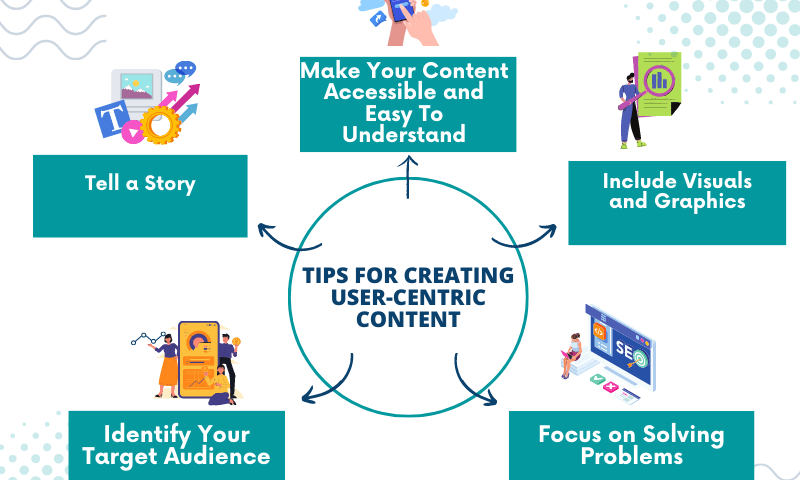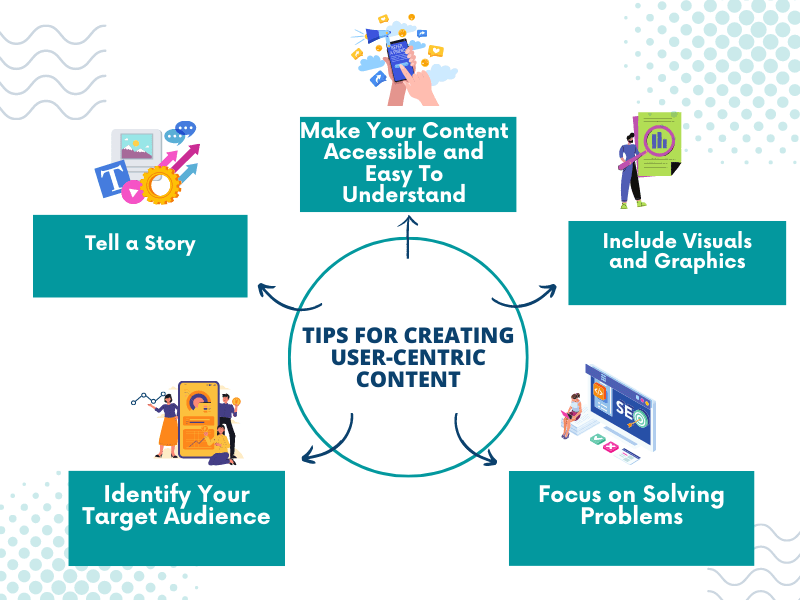
[PODCAST] Solving Nonprofit Leader Burnout
June 3, 2023
[PODCAST] Donor Messages Using Emotional Data
June 9, 2023Creating User-Centric Content (and Why It Matters)


Creating User-Centric Content (and Why It Matters)
You’ve most likely heard the adage “content is king”, before. The phrase became popular after Bill Gates wrote an essay with the same title that detailed Gates’ beliefs about what would ultimately be profitable on the internet. In the essay, he also acknowledged that content can take many forms:
“When it comes to an interactive network such as the Internet, the definition of ‘content’ becomes very wide. For example, computer software is a form of content—an extremely important one, and the one that for Microsoft will remain by far the most important.
But the broad opportunities for most companies involve supplying information or entertainment. No company is too small to participate.”
Whether it’s words, images, videos, software, or something else,just as Bill Gates predicted over two decades ago, content creation has become an essential component of marketing strategies in today’s digital age.
Businesses need to produce content that resonates with their target audience to build brand awareness, increase engagement, and drive conversions. However, creating content that truly connects with users is not an easy task, and requires a user-centric approach. In this article, we’ll explain exactly what user-centric content is, why it’s so important, and share some tips for creating it.
What Is User-Centric Content?
Creating user-centric content—also referred to as “customer-centric content”—means that the content is designed with the user or customer in mind. It is crafted to cater to their needs, wants, interests, and pain points. This approach helps organizations create content that is relevant, engaging, and useful to their target audience. When content is user-centric, it can help establish trust, build relationships, and encourage loyalty among users.
User-centric content isn’t just important to businesses, either. It is instrumental to the success of other organizations as well, like nonprofits and charities. While these organizations may not have customers in the general sense, they do rely on donors and supporters in order to carry out their missions, and providing these supporters with user-centric content is just as crucial for them as it is for businesses. Let’s delve deeper into why user-centric content matters so much.
Why Does User-Centric Content Matter?
First and foremost, user-centric content can help you stand out in a crowded digital landscape. By creating content that is tailored to your audience’s needs, you can set yourself apart from competitors who are producing generic, self-serving content. Additionally, user-centric content can help you build trust and establish credibility with your audience. When users see that your content is relevant and valuable, they are more likely to view your business as an authority in your industry.
User-centric content can also help you increase engagement and drive conversions. When users find your content helpful and engaging, they are more likely to share it with others, which can help expand your reach. Additionally, if your content includes calls to action (CTAs) that encourage users to take specific actions—such as signing up for a newsletter or making a purchase—you can increase conversions and drive revenue. So, how do you actually create user-centric content?
Tips for Creating User-Centric Content
- Identify Your Target Audience – The first step in creating user-centric content is to identify your target audience. Understanding your audience’s demographics, interests, and behaviors can help you tailor your content to their needs. You can use tools such as Google Analytics and social media analytics to gain insights into your audience’s behavior and preferences. Additionally, conducting surveys or focus groups can provide valuable feedback from your audience.
-
- Once you have identified your target audience, you can start creating content that is tailored to their needs. This can include blog posts, videos, infographics, social media posts, and more. The key is to create content that is valuable, informative, and engaging. According to a study performed by Demand Metric, over 60% of marketers personalize their content to their target audience, and 80% of them believe that it’s more effective than content that hasn’t been personalized.
- Focus on Solving Problems – One way to ensure your content is user-centric is to focus on solving problems. Your content should provide solutions to the challenges your audience is facing. By offering solutions, you position your business as an authority in your industry, and users are more likely to trust and rely on your content because it is actually helping them with an issue or question they have.
- Tell a Story – Another way to create user-centric content is to focus on storytelling. Stories are powerful tools that can help users connect with your brand on an emotional level. Throughout all of history, humans have always been part of narrative cultures, passing down stories from generation to generation in various forms, including oral stories, text, images, pictures, paintings, videos, and more. Narratives are a part of who we are and what we enjoy, so it makes sense that they would also be effective marketing tools.
-
- By sharing stories that resonate with your audience, you can build a strong connection and foster a sense of community. For example, if you sell outdoor gear, you could share stories of adventurers who have used your products to conquer challenging trails or summit mountains. Generally, more readers will connect with these stories than if you were simply to claim you sell the best gear.
- Include Visuals and Graphics – In addition to solving problems and storytelling, another way to create user-centric content is to use visuals. Humans are visual creatures, and content that includes images and videos can be more engaging and memorable than text alone. In fact, 91% of consumers say they prefer visual and interactive content over traditional forms like plain text alone. Using visuals can help you illustrate your points, break up large blocks of text, and make your content more visually appealing.
- Make Your Content Accessible and Easy To Understand – Finally, it is essential to make sure your content is accessible and easy to consume. This means using clear language, formatting your content for easy readability, and making sure your website is optimized for mobile devices. If your content is difficult to understand or access, users are less likely to engage with it.
Are you looking to create user-centric content and improve your nonprofit’s site performance and online presence? As the leader in Google Grant management for nonprofit organizations, Nonprofit Megaphone understands how valuable user-centric content is, which is why we offer professional SEO content writing services. Learn more about NPM and reach out today to learn how we can make both the Google Grant and your content work for your organization!
The post Creating User-Centric Content (and Why It Matters) appeared first on Nonprofit Hub.
